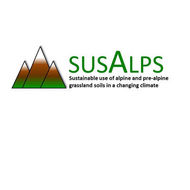Impacts of slurry acidification and injection on fertilizer nitrogen fates in grassland (2023)
Schreiber M., Bazaios E., Ströbel B., Wolf B., Ostler U., Gasche R., Schlingmann M., Kiese R., Dannenmann M.
Nutrient Cycling in Agroecosystems, 125 (2), 171-186
doi:10.1007/s10705-022-10239-9
Abstract
AbstractLow nitrogen (N) use efficiency of broadcast slurry application leads to nutrient losses, air and water pollution, greenhouse gas emissions and—in particular in a warming climate—to soil N mining. Here we test the alternative slurry acidification and injection techniques for their mitigation potential compared to broadcast spreading in montane grassland. We determined (1) the fate of 15N labelled slurry in the plant-soil-microbe system and soil-atmosphere exchange of greenhouse gases over one fertilization/harvest cycle and (2) assessed the longer-term contribution of fertilizer 15N to soil organic N formation by the end of the growing season. The isotope tracing approach was combined with a space for time climate change experiment. Simulated climate change increased productivity, ecosystem respiration, and net methane uptake irrespective of management, but the generally low N2O fluxes remained unchanged. Compared to the broadcast spreading, slurry acidification showed lowest N losses, thus increased productivity and fertilizer N use efficiency (38% 15N recovery in plant aboveground plant biomass). In contrast, slurry injection showed highest total fertilizer N losses, but increased fertilization-induced soil organic N formation by 9–12 kg N ha−1 season−1. Slurry management effects on N2O and CH4 fluxes remained negligible. In sum, our study shows that the tested alternative slurry application techniques can increase N use efficiency and/or promote soil organic N formation from applied fertilizer to a remarkable extent. However, this is still not sufficient to prevent soil N mining mostly resulting from large plant N exports that even exceed total fertilizer N inputs.